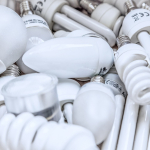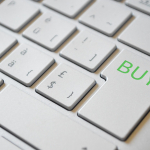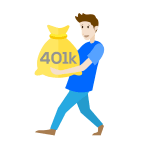As tariff inflation 2025 looms on the horizon, households must prepare for the potential impact on their finances. With the intricacies of PCE services reflecting persistent price increases and price pass-through effects slowly creeping into everyday goods, smart household budgeting becomes paramount. Implementing a proactive strategy can serve as an effective inflation hedge, allowing families to navigate these turbulent economic waters. By crafting a comprehensive “Tariff-Shock Budget” that includes a three-month cash buffer, a list of possible substitutes, and scripts for renegotiation with service providers, consumers can fortify their financial positions against the coming surge in prices.
Understanding Tariff Inflation and Its Impact on Household Budgets
Tariff-driven inflation is a complex economic phenomenon that significantly affects household budgets. It occurs when governments impose tariffs on imported goods, leading suppliers and businesses to raise prices to cover increased costs. This inflationary pressure isn’t just a fleeting concern; it has the potential to create long-lasting changes in the economy.
As tariffs can take time to filter through the economy, consumers may not immediately notice the impact on prices. However, data shows that inflation from these tariffs can escalate quickly once the costs are fully passed on to consumers. According to Deutsche Bank, expectations suggest inflation rates may eventually exceed 4% as tariffs are imposed on various goods, particularly essential consumer items. As households grapple with rising expenses, effective household budgeting becomes critical.
PCE services play a vital role in understanding this inflationary trend. The Personal Consumption Expenditures (PCE) price index can provide insights into how everyday consumer prices are shifting due to tariff adjustments. With rising costs, households may feel the squeeze on their finances, necessitating strategic planning to manage their expenses effectively.
In the face of rising inflation, families can consider various tactics to safeguard their budgets. For instance, having a 3-month cash buffer can offer the financial flexibility needed during times of uncertainty when prices may spike unexpectedly. Additionally, using a substitutes list—a collection of alternative products that provide similar value—can help mitigate spending on pricier items without sacrificing quality. Finally, being open to price pass-through negotiations can empower consumers to strike better deals and manage costs, ensuring that their household budget remains sustainable amid looming inflation challenges.

Creating a Tariff-Shock Budget: Essential Components
When faced with the impending impact of tariff-driven inflation, households must implement a proactive financial strategy. A Tariff-Shock Budget is designed to safeguard against unexpected price hikes by ensuring financial resilience and flexibility. Here are essential components to consider:
| Component | Description | Benefits |
|---|---|---|
| 3-Month Cash Buffer | Allocate funds to cover three months of essential living expenses, including groceries, utilities, and transportation. | Provides a safety net against sudden price increases and market volatility. |
| Substitutes List | Identify cheaper alternatives for frequently purchased items, such as generic brands, local produce, or bulk options. | Helps to minimize spending while maintaining household needs amidst rising costs. |
| Renegotiation Scripts | Prepare scripts for negotiating costs with service providers like internet, insurance, and utilities. This can involve discussing pricing plans or seeking discounts. | Encourages proactive communication, potentially reducing monthly bills and avoiding tariff-related increases. |
Implementing these components can significantly bolster household** budgeting** against price pass-through effects resulting from rising tariffs. As tariffs remain an uncertain factor in the economic landscape, households must also view this budget as a living document, allowing for adjustments as required, particularly in response to shifting inflation expectations.
Ultimately, creating a Tariff-Shock Budget is not just about mitigating inflation—it serves as an inflation hedge, ensuring that households can navigate today’s complex economic environment with confidence and preparedness.
Preparing for the Future: Strategies to Mitigate Tariff-Driven Price Increases
As households brace for the impacts of tariff-driven inflation, effective strategies are essential to cushion against rising prices. The looming effects of tariffs mean that consumers should adopt proactive measures to ensure financial stability amid PCE services inflation and potential price pass-throughs.
One prudent step is to build a three-month cash buffer, which acts as a financial safety net during periods of increasing costs. This reserve can help cover essential expenses, ensuring that sudden price hikes don’t force families into a tight financial squeeze.
Next, creating a comprehensive substitutes list is vital. With certain goods expected to rise sharply in price, identifying alternative products can help mitigate the impact on household budgets. For instance, if tariffs are affecting imported items, exploring local options or opting for different brands can lead to cost savings while maintaining essential household supplies.
Moreover, consumers can prepare by utilizing household budgeting techniques. Analyzing spending habits can reveal areas where adjustments can be made, such as cutting unnecessary expenses or seeking bulk purchasing options. Engaging in regular budget reviews can help households adapt to evolving economic circumstances.
Lastly, developing renegotiation scripts for recurring expenses, such as mortgages or utility agreements, empowers consumers to secure better rates or terms. By informing service providers of their intent to explore alternatives due to tariff impacts, households can leverage competition to negotiate favorable agreements, further reinforcing their financial resilience.
In summary, by establishing a cash reserve, preparing substitution options, practicing diligent household budgeting, and honing negotiation skills, families can effectively prepare for the future and navigate the challenges presented by tariff-driven inflation.
Frequently Asked Questions
What is tariff-driven inflation, and how does it impact households?
Tariff-driven inflation refers to the increase in prices of imported goods as a direct result of tariffs imposed by governments, particularly in the context of trade wars or economic policies aimed at protecting domestic industries. When tariffs are applied, businesses that import these goods often pass the additional costs onto consumers. As a result, households may experience higher prices for everyday items, leading to increased living expenses. This effect can strain household budgets, requiring families to adjust their spending habits or build larger financial buffers to cope with the rising costs.
How can households prepare for potential price increases due to tariffs?
To prepare for potential price increases caused by tariffs, households can take proactive measures such as budgeting more effectively to allocate funds for essential goods, stocking up on non-perishable items, and focusing on purchasing locally sourced products that may not be subject to the same import tariffs. Building an emergency fund is also crucial, as it provides a financial cushion to handle unexpected price hikes. Additionally, consumers can monitor market trends and inflation forecasts to anticipate upcoming changes and adapt their purchasing strategies accordingly.
What specific products are most likely to see price increases from tariffs?
Products most likely to see price increases due to tariffs include electronics, clothing, appliances, and certain food items, particularly those sourced from countries facing high tariffs. For example, as tariffs on steel and aluminum rise, costs for automobiles and construction materials can also increase. Additionally, everyday consumer goods made with imported components may become more expensive, impacting prices for a wide range of products. Monitoring these trends can help consumers make informed decisions about their purchases.
How do tariffs influence overall economic conditions and inflation rates?
Tariffs can influence overall economic conditions and inflation rates by disrupting supply chains and increasing production costs for manufacturers who rely on imported materials. When businesses incur higher costs, they often pass those costs onto consumers in the form of higher prices. This can contribute to overall inflation as the consumer price index (CPI) increases. Economists closely watch inflation metrics and consumer sentiment to assess the wider economic impacts, as prolonged inflation can lead to changes in interest rates and affect consumer spending behavior.














Comments are closed.